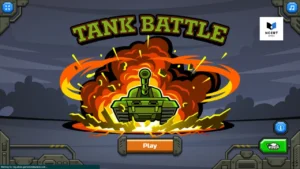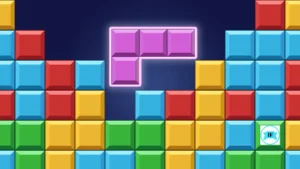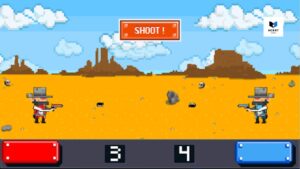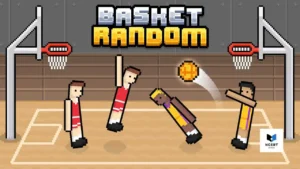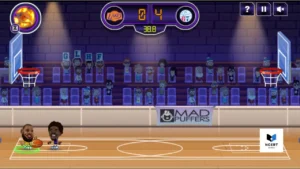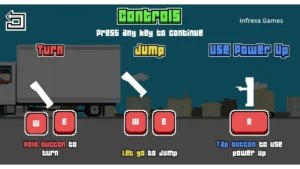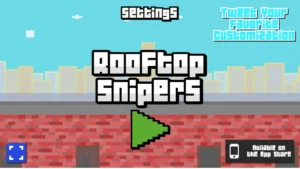- Master Chess
- Snowball.io
- Gun Mayhem 2
- Crazy Roll 3d
- Mahjong Dark Dimensions Double Time
- Hole io Game
- Tank Battle
- Paper.io 2
- Krunker
- Block Blast Online
- Squid Challenge
- 12 MiniBattles
- Money Movers 1
- Ping Pong
- 2048 Cupcakes
- Pool 8 ball online
- Tic-Tac-Toe Multiplayer
- Basket Random
- House of Hazards
- Basketball Stars
- Soccer Random Game
- Getaway Shootout
- Moto x3m Bike Race Game
- Noob vs Pro: Challenge
- Rooftop Snipers
Shared Screen Synergy: Master Strategies for 2-Player Browser Games
The strength of 2-Player browser games is the instant, zero-friction shared session. Your goal isn’t just to play, but to maximize the fun by understanding the specific demands of the environment: managing input conflicts on a single keyboard and achieving perfect team synergy.
We’ve organized the titles into functional tiers based on the player relationship and the core skill required for victory.
Competitive Tiers: Mastering the Dual-Player Session
True competitive mastery in this environment is defined by how well you adapt to the shared control scheme and the game’s physics.
| Category | Core Challenge | Input Type | Example Games |
|---|---|---|---|
| Co-Op Synergy | Synchronization, Interdependence | Shared Keyboard (S.K.) | Money Movers 1, Wind & Water |
| Shared Chaos | Unpredictable Physics, Ambush Tactics | Shared Keyboard (S.K.) | 12 MiniBattles, Gun Mayhem 2, Rooftop Snipers |
| Logic & Sports Duels | Positional Strategy, Timing | Online Duel (O.D.) or S.K. | Basketball Stars, Tic-Tac-Toe Multiplayer, Pool 8 ball online |
Expert Strategies for 2-Player Dominance
1. Co-Op Synergy (The Shared Goal)
These games demand absolute, synchronized communication. Victory hinges on interdependence, where individual skill is secondary to perfect timing.
🧠 Core Tactics: Sequential Dependency
- Money Movers 1: Establish a strict sequence of actions. Player 1 (the slower, stronger figure) is responsible for all heavy lifting and receiving items. Player 2 (the fast, small figure) is the designated hazard activator. Never move the smaller player until the larger player is fully positioned to pass the next obstacle.
- Wind & Water (Similar Puzzlers): Practice Input Isolation. In dual-input co-op games, the biggest mistake is attempting to monitor your partner’s inputs. Agree on the goal, then focus only on your assigned character’s movement.
2. Shared Chaos (Shared Keyboard Competition)
This tier is pure, manic rivalry. Success means accepting the game’s absurd physics and manipulating the environment to sabotage your opponent.
🎯 Ambush and Advantage
- 12 MiniBattles: Win the input battle first. Since controls change every few seconds, the first player to confirm which key activates the action (e.g., Space, A, or Q) gains an insurmountable advantage in that round. This requires rapid control identification, not strategic depth.
- House of Hazards: Use the Delay Tactic. Hazards are often triggered by the first player’s motion (stepping on a button, hitting a switch). A smart tactic is to delay your move slightly, letting your opponent step into the proximity of a known button to trigger a trap against themselves.
- Rooftop Snipers: Recoil = Momentum Tool. The exaggerated physics punish held inputs. Fire your weapon in the opposite direction of where you need to move to generate controlled vertical or horizontal momentum, using the gun as a thruster to reposition or recover from a fall.
🔫 Stage Control
- Gun Mayhem 2: Prioritize vertical control. The weapon is your vertical thruster. Fire downward to gain height and stay on the platforms. The most common cause of defeat is falling off the bottom of the map, not being shot.
3. Logic & Sports Duels (Positional Mastery)
These games rely less on frantic speed and more on precise timing, positioning, and pattern recognition.
🏀 Reliable Scoring
- Basketball Stars: Avoid the high-risk dunk. The biggest dunks are easily blocked. Victory in competitive 1v1 comes from the reliable mid-range jump shot executed at the apex of the character’s jump animation. Master this one shot for consistency.
⚽ Physics Exploitation
- Soccer Random Game / Basket Random: Force the vertical chaos. Forget realistic defense. The best defensive strategy is launching the ball or the basket as high as possible. This forces your opponent into imprecise, physics-based jumps, maximizing their chance of error.
♟️ Center Control
- Tic-Tac-Toe Multiplayer / Pool 8 ball online: In both games, control the center of the board/table. In Tic-Tac-Toe, winning the center square on the first move allows you to threaten two corners simultaneously. In Pool, controlling the center of the table maximizes your available shot angles.
Maximizing the 2-Player Session
A collaborative session requires technical preparation and communication management to maintain the fun.
- Shared Keyboard Input Mitigation: When sharing a keyboard, use keys that are diagonally opposed (e.g., WASD for Player 1 and the Arrow Keys for Player 2). This prevents accidental hand collision and input overlap, preserving session integrity.
- The “Friendly Loss” Handicap: If you are noticeably better than your partner in a competitive game, implement a self-imposed handicap. For example, mandate that you can only score in Basketball Stars using the low-scoring layup, forcing your partner to adapt and increasing their engagement.
- Communication Discipline: In cooperative games, limit communication to declarative commands, not panicked reactions. Avoid yelling “Jump!” Instead, use clear, planned statements: “I’m holding the platform, jump on three,” or “Switch activated.”
- Technical Check: Always run a quick, low-stakes 1v1 test round to check for shared-screen frame rate drops before committing to a long competitive session. If frame rate drops, immediately switch to a turn-based title to preserve the quality of the session.
From the frantic key-mashing of 12 MiniBattles to the strategic coordination of Money Movers, these games prove that competitive mastery doesn’t require gigabyte downloads. Your next shared victory is just one browser tab away.
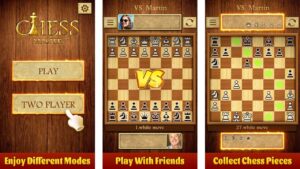
![Play Snowball.io [Full Screen] on Infrexa](https://ncert.infrexa.com/wp-content/uploads/2023/04/Play-Snowball-.io-Full-Screen-on-Infrexa-300x169.jpg)




